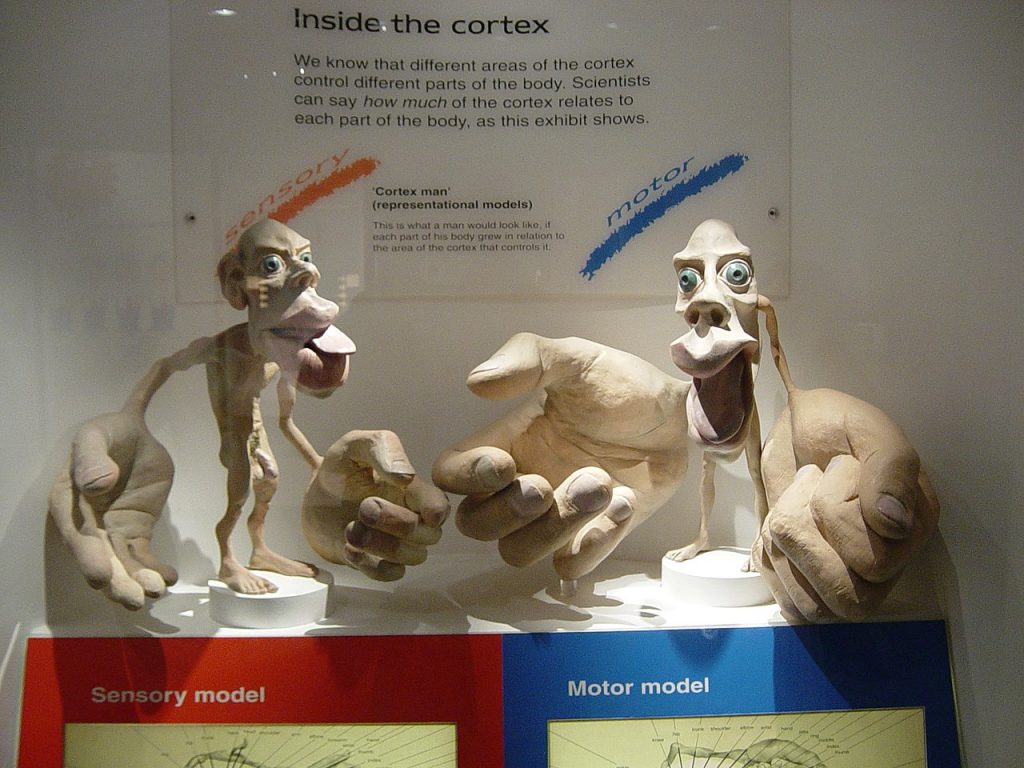I came across this quotation a few years ago now, but it is still very timely:
“There is one thing that, when cultivated and regularly practiced, leads to deep spiritual intention, to peace, to mindfulness and clear comprehension, to vision and knowledge, to a happy life here and now, and to the culmination of wisdom and awakening. And what is that one thing? It is mindfulness centred on the body.”
The more time I spend enhancing my internal awareness of bodily sensation–which is the ‘day job’ for Feldenkrais practitioners– the more confident I become of the truth of the above statement. Our thoughts can and do deceive us all the time, but whatever else your physical self is doing it is always relaying to you what is true for you at that moment – but are you are able to pick up the signals? We have a magnificent feedback system for observing both ourselves, and the world around us, however many of us learn very early to edit much of our internal perceptions out of our conscious awareness, and instead focus most of our attention outwards. If we ignore this vital source of feedback for long enough we may become ill, or begin to suffer chronic pain, or at the very least find ourselves struggling with ongoing feelings of stress and anxiety.
For some of us the sheer volume of sensory feedback we are experiencing is so overwhelming that we naturally seek out strategies for lowering its intensity – self-medicating with sugar, tobacco and alcohol (and of course other less socially acceptable strategies). Indeed there is growing evidence that that is the situation for many of the people who express symptoms on the Autism spectrum, including those with milder conditions such as Asperger’s Syndrome, and related issues such as ADD and OCD.
Here is a quote from Juensung Kim, an articulate young man writing about his own experience with Autism:
“In the busy blur of life, the things that stand out to me are not necessarily the things which stand out to others. For most people, the human sensory capabilities are something frequently overlooked. Human beings have five senses. The five basic senses are how we perceive the world, and many of those with autism have these senses on a whole other level.
I’ve struggled with these senses all my life. I can pick apart every ingredient in a plate of food. I can hear a cellphone go off halfway across a restaurant, and I can feel pretty much every thread of a sock on my foot.
It can get to be too much, which leads to a problem called “over-stimulation.”
I crash mentally from the sheer amount of information that’s coming in, akin almost to a computer that’s taking in too much data.”
I did have a link to the article I extracted this from, but it is no longer available. At some point I will locate a more searchable example; in the meantime I highly recommend Temple Grandin’s Thinking In Pictures, as this includes several examples of different ways in which sensory overload can be experienced by those on the Autism spectrum.
The majority of us are not as overwhelmed as this on a daily basis, but perhaps the majority of us would not find it hard to imagine how difficult this level of input could be. Our “neurotypical” state filters out a lot of sensory noise, making it easier to function in a stimulating world, yet I am guessing many of us can easily empathise with the difficulties Kim describes.
I struggle a lot with practising what is commonly called mindfulness. Actually I feel as if my mind is too full most of the time, sometimes even when I am dreaming. Unfortunately, as soon as I attempt to quiet myself, my thoughts multiply, images and ideas, concerns and responsibilities dance around my inner landscape and I find myself constantly distracted. I have tried many different kinds of meditation, and I have experienced wonderful “altered” states of inner peace and joy as a result of sound healing, guided meditation, and hypnosis, but I have always found it difficult–usually impossible–to reproduce these unfamiliar mental states on my own. I was much more successful with Tai Chi – moving in a mindful way is more achievable for me than quieting my thoughts in stillness.
It is quite likely you have noticed how fashionable mindfulness has become, but you may not realise that some researchers believe that meditative movement such as Feldenkrais or Tai Chi may be a particularly effective way to experience the benefits everyone is talking about. Here is a link to a study that focuses on Tai Chi and Qigong that also references Feldenkrais Awareness Through Movement as one of a number of potential modern Somatic alternatives (none of which featured fully in the studies being discussed).
The idea for a Feldenkrais-based form of BodyMindfulness came to me a couple of years ago. While preparing a workshop on the functioning of the eyes I discovered that a very simple palming process brought me into a deep state of physical and mental calm surprisingly quickly – in fact it took less than 5 minutes. I began to wonder if it might be possible to use Awareness Through Movement to “tune in” to exactly those areas of the sensory-motor nervous system that occupy a disproportionately large area of the brain–because of their greater neurological complexity–and thus bring a deep inner stillness, quiet, and calm to the whole self; nervous system and muscles, brain and mind all syncing into a naturally available harmonious state.
 Sensory Homunculus and Motor Homunculus sculptures at the Museum of Natural History, London, based on the cortical homunculi mapped by Dr. Wilder Penfield. Photographed by Dr. Joe Kiff
Sensory Homunculus and Motor Homunculus sculptures at the Museum of Natural History, London, based on the cortical homunculi mapped by Dr. Wilder Penfield. Photographed by Dr. Joe Kiff
My inspiration comes from Wilder Penfield’s sensory-motor homunculus; a fascinating if somewhat unappealing image which was the result of early attempts to use technology to “map” the brain. This distorted figure roughly represents the relative size and significance of those parts of ourselves that we a) sense more clearly, b) use more frequently, and c) use in more complex ways. We all share its giant hands, feet, eyes, ears, lips and tongue, although each adult brain is unique, modified by our individual habitual behaviours and learned abilities. A musician’s “neuro-hands” are even larger still, because of all the hours of practice that are necessary to produce a “talented” performer. A belly dancer will have more sensory-motor awareness of her torso muscles than the vast majority of us, and it is well known that London taxi drivers develop enlarged areas of the brain over time as they memorise and master their “Knowledge” of the streets of London.
This is neuroplasticity in action and it is big focus of research at the moment, which is very exciting for Feldenkrais teachers because it is what our Method is all about. While researching my eye workshop the suggested percentage estimate of brain “power” that we use when processing visual information ranged from 35% – 60%, so I suspect that the homunculi images the link reveals may be somewhat outdated…
I am exploring BodyMindfulness as a workshop theme for one simple reason – a great many of my students are exactly like me, i.e. the sort of people who struggle to relax and let go; people whose minds and senses are constantly over-stimulated. Having a perpetually over-stimulated nervous system can lead to stress, anxiety, chronic muscle tension and pain, and lack of sleep, and of course all of those symptoms can trigger depression and other types of ill health associated with chronic stress. Many people find meditation to be the answer, but those of us who need it most are often the very people who find it most difficult to do, giving up in frustration long before we have managed to achieve any of the potential benefits. The eyes, the ears, the hands, lips, and tongue together take up a very large percentage of the sensory-motor nervous system and we can use Awareness Through Movement lessons focusing on these parts of ourselves, in conjunction with attention to the internal rhythms of our heart and our breathing, to bring our whole nervous system into a state of deep calm in a simple, natural, reliable way.
For the moment all my upcoming workshops are featured on the Home page of this website, and on the Workshop section of the drop-down menu, but do get in touch even if you are unable to attend a workshop, as my next project is to get these lessons into a more available format for home use.
(This is an updated version of my original blog post –15.8.13).
